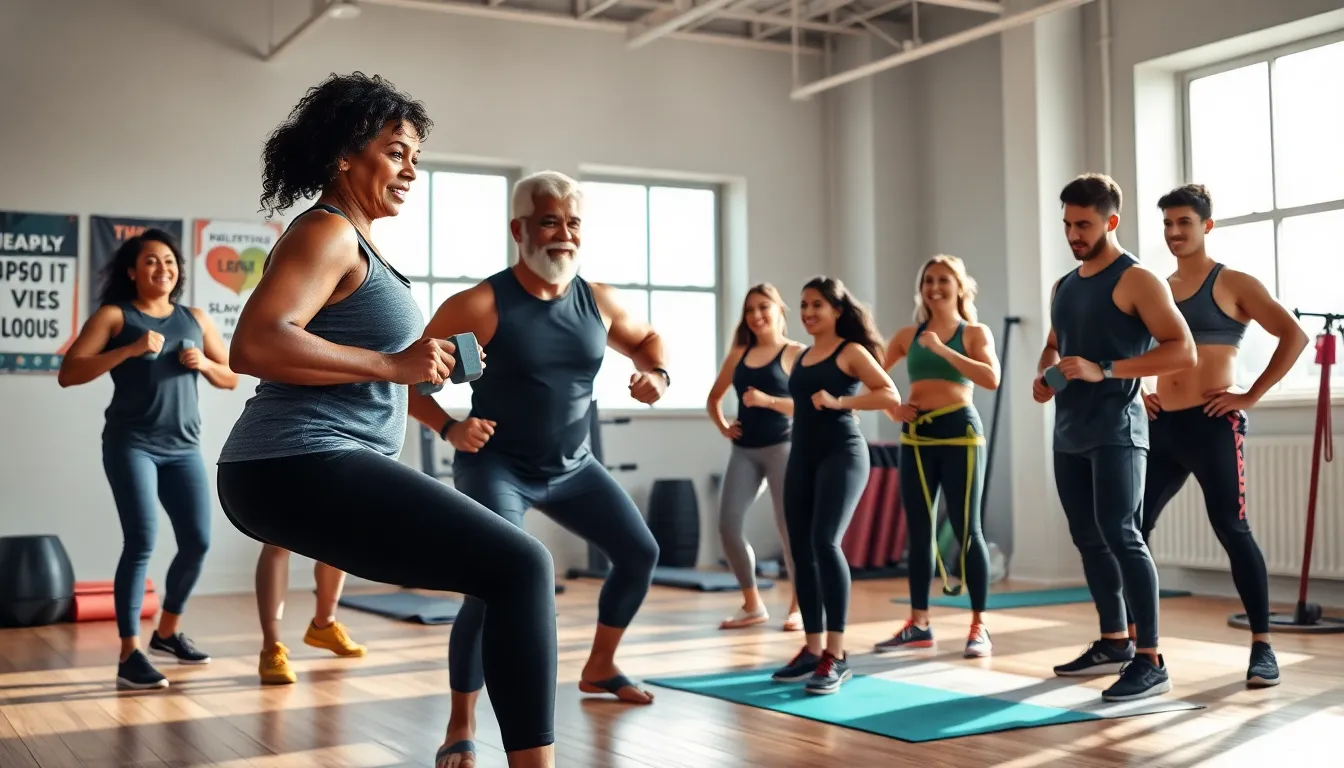Table of Contents
ToggleIn recent years, fitness training has evolved into a multifaceted domain, embracing innovative technologies, diverse methods, and an increased focus on mental well-being. The latest trends in fitness showcase how individuals are not only striving for physical excellence but are also prioritizing their overall health. This article explores the current state of fitness training, highlighting key trends for 2025, the impact of technology, nutrition, mental health, and how anyone can create a personalized fitness plan to achieve their goals.
Understanding Fitness Training Trends

As society becomes more health-conscious, the landscape of fitness training continues to shift dramatically. Some of the most significant trends influencing this field include a growing interest in functional fitness, group training sessions, and wellness coaching.
Functional fitness emphasizes exercises that mimic everyday activities, enhancing strength and coordination. This approach appeals to a broad audience, including seniors seeking to maintain mobility, making it a dominant trend in 2025.
Also, group workouts remain popular, as they foster a sense of community and support. Many individuals find motivation through shared goals and camaraderie, which enhances both individual and group performance. Wellness coaching is also on the rise, providing personalized guidance that integrates physical training with nutrition and mental health support, ensuring a holistic approach to wellness.
Impact of Technology on Fitness Training
The integration of technology into fitness training has revolutionized how individuals approach their health and workouts. Wearable devices, fitness apps, and virtual training platforms are now commonplace, enabling users to track their progress, set goals, and receive real-time feedback.
Wearable fitness trackers, like smartwatches, allow individuals to monitor heart rates, track steps, and even gauge sleep quality. Such insights empower users to make informed decisions about their training regimens. Fitness apps, on the other hand, offer customized workout plans and instructional videos, catering to various fitness levels and preferences.
Also, the rise of virtual training sessions has made fitness more accessible. Whether through live classes or on-demand workouts, technology breaks down geographical barriers, allowing individuals to access top trainers and classes nationwide, all from the comfort of their homes.
Popular Training Methods in 2025
In 2025, several training methods stand out for their effectiveness and incorporation of contemporary fitness philosophies. High-Intensity Interval Training (HIIT) continues to dominate, known for its ability to burn calories efficiently in shorter time frames. HIIT workouts incorporate bursts of intense activity followed by rest or low-intensity periods, making them ideal for busy individuals.
Pilates and yoga have also surged in popularity. They not only enhance flexibility and core strength but also promote relaxation and mindfulness. Many fitness enthusiasts combine these disciplines to create a balanced routine.
Emerging methods such as training with virtual reality (VR) are beginning to gain traction. VR workouts offer immersive experiences that can make exercising more exciting and engaging, especially for those who struggle with traditional fitness methods.
Nutrition Trends for Fitness Enthusiasts
Nutrition remains a critical aspect of fitness training. As athletes and fitness enthusiasts seek to optimize their performance, new nutritional trends continue to emerge. Plant-based diets have become increasingly popular, with many people recognizing the benefits of reducing meat consumption for enhanced energy levels and improved recovery times. Superfoods such as quinoa, chia seeds, and avocados are frequently touted for their health benefits, making their way into the diets of many fitness aficionados.
Supplementation, particularly of proteins and vitamins, has also expanded. Protein powders, BCAAs, and pre-workout supplements are more accessible than ever, allowing athletes to tailor their diet to their unique needs. Also, the focus on hydration has intensified. Electrolyte-infused drinks are favored for ensuring optimal hydration during workouts, showcasing a shift from traditional water-only intake.
Mental Health and Fitness Training
The connection between mental health and physical fitness is increasingly recognized in today’s training paradigms. As more individuals prioritize mental well-being, workouts are shifting towards practices that nurture psychological health alongside physical prowess.
Mindfulness, meditation, and stress reduction techniques are being woven into fitness routines, enhancing the overall experience. Activities such as yoga not only promote physical flexibility but also mental clarity, fostering a stronger connection between mind and body.
Also, the fitness community is becoming more vocal about the importance of mental health, encouraging openness about struggles and the significance of seeking help. This growing understanding is attracting more individuals who might have previously viewed fitness as solely a physical try.
How to Create a Personalized Fitness Plan
Developing a personalized fitness plan is key to achieving individual health and performance goals. Initially, one should assess their current fitness level, identify specific goals, and consider any limitations or preferences.
- Set Clear Goals: Determine whether the aim is weight loss, muscle gain, improved endurance, or overall health. Having clear objectives helps tailor workouts effectively.
- Choose Activities: Select a mix of cardiovascular, strength, flexibility, and relaxation exercises that align with preferences and goals. Consider scheduling activities throughout the week to maintain variety.
- Incorporate Technology: Use fitness apps or wearables to track progress and adjust plans as necessary. Regular feedback is crucial for staying motivated and accountable.
- Prioritize Recovery: Schedule downtime to allow for muscle recovery and inhibit injuries. Incorporating rest days and adhering to proper hydration and nutrition will enhance overall performance.
Conclusion
As the fitness landscape continues to evolve, staying informed about the latest trends, technological advancements, and holistic approaches is essential for anyone committed to their health. By understanding modern fitness training trends, incorporating technology, recognizing nutritional needs, and addressing mental health, individuals can craft a personalized fitness plan that not only improves physical well-being but fosters a balanced lifestyle. The future of fitness is bright, and staying ahead of these trends will empower individuals to achieve their fitness aspirations.







